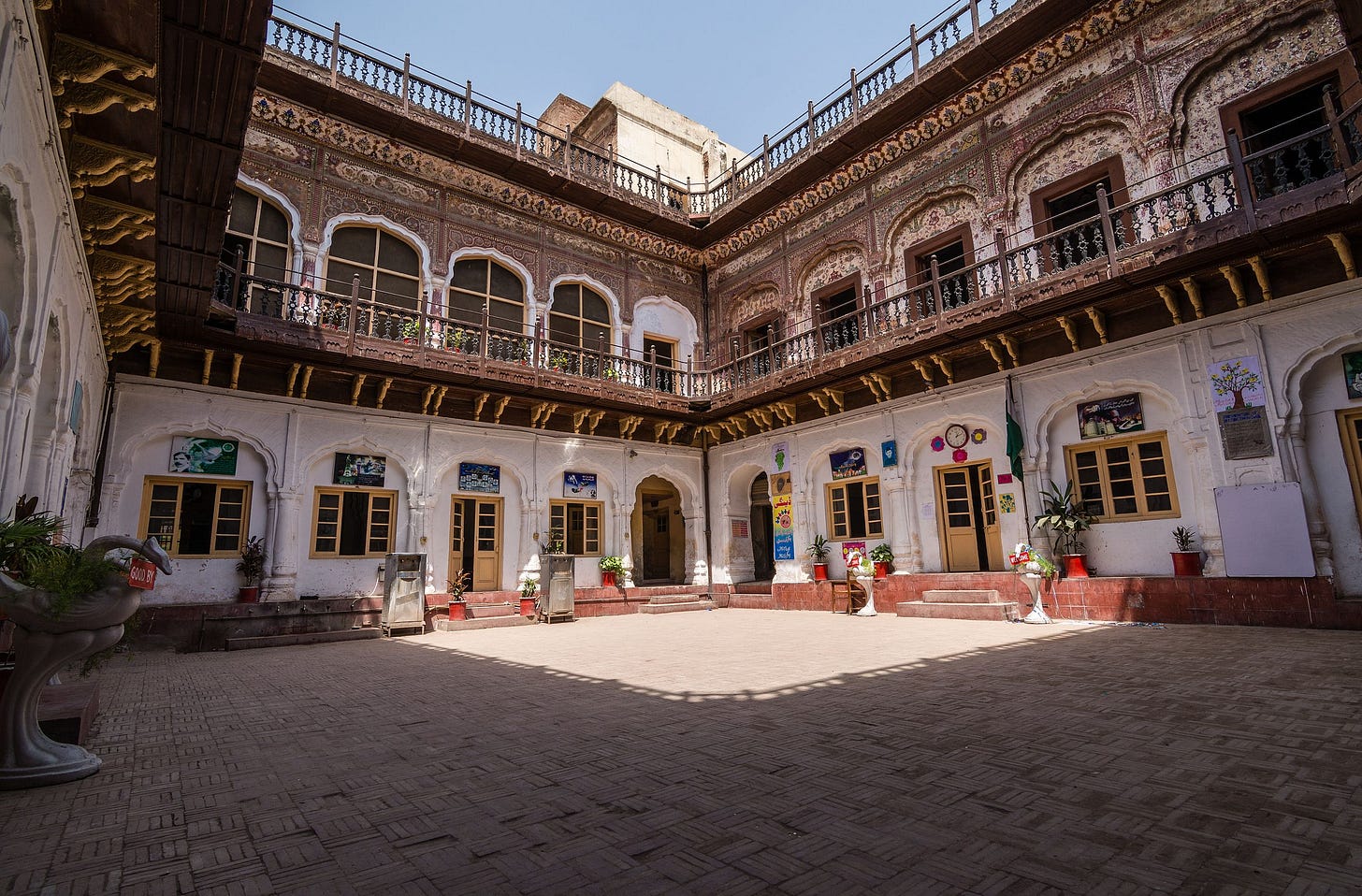The Sikh and Hindu Artistic Legacy in Lahore's Architectural Landscape
Words by Shaezal Naveed Cheema
Welcome to the Brown History Newsletter. If you’re enjoying this labour of love, please do consider becoming a paid subscriber. Your contribution would help pay the writers and illustrators and support this weekly publication. If you like to submit a writing piece, please send me a pitch by email at brownhistory1947@gmail.com.
Don’t forget to check out our SHOP and our Podcast.

The Sikh and Hindu Artistic Legacy in Lahore's Architectural Landscape
Nestled in the heart of Punjab, the historical city of Lahore boasts a rich tapestry of art, culture, and architecture that has evolved over centuries, shaped by the contributions of various cultural, ethnic, and religious groups. For centuries, this vibrant metropolis has been a crossroads where the past melds with the present. As one meanders through its bustling bazaars, explores its historical landmarks, and marvels at its architectural legacy, it becomes evident that Lahore is a repository of history, its streets echoing with stories of empires risen and fallen, and its walls adorned with art that whispers tales of artistic syncretism.
Amidst the labyrinthine streets and bustling markets, Lahore proudly wears the mantle of a city that has absorbed myriad cultural influences, each adding a layer to its character. With its grandeur and artistic finesse, the Mughal Empire left an indelible mark on the city's architecture, creating timeless marvels like the Lahore Fort and the Badshahi Mosque. These monumental structures, along with more mainstream ones, stand as a testament to the opulence and aesthetic prowess of their creators, but they also house secrets – subtle traces of Sikh and Hindu artistry and symbolism that political and religious prejudices have long overshadowed.
Much of Lahore’s heritage, which had Sikh and Hindu architectural elements, has often been discredited, overshadowed, or misattributed. It is essential for authentic history-telling to shed light on the often-overlooked artistic legacy in Lahore that does not necessarily have Muslim roots, explore the reasons behind its discrediting, and highlight the need to acknowledge and celebrate the diversity of influences that have contributed to the vibrant cultural landscape of this city.
The Lahore Fort
For the longest time, we have been under the impression that the Sikh rule, starting with Ranjit Singh, only resulted in the deterioration of the Mughals’ architectural legacy. Historian Reinhart Koselleck used the words “asymmetrical concepts that are equally antithetical” and “civilized-uncivilized” to distinguish between the Mughal and Sikh architecture – making the latter seem unworthy and degraded.





